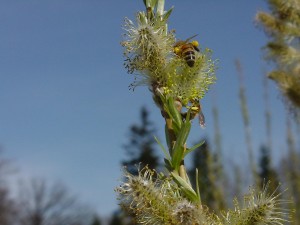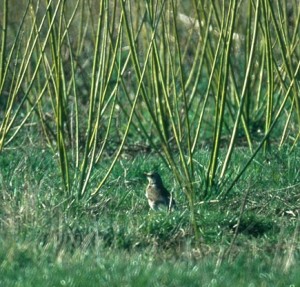Join us in responding to the Common Agricultural Policy Reform Consultation
DEFRA are currently seeking views on the Common Agricultural Policy reform. The consultation will run until November 28th. More details can be found on the above link or by calling DEFRA on 020 7238 6348. Responses to the consultation should be sent to Capconsultation@defra.gsi.gov.uk.
We will be co-ordinating a response with other organisations active in the energy crops sector including Murray Carter, Strawsons Energy, Iggesund, Rothamsted Research, University of Southampton, AFBI, Game and Wildlife Conservation Trust, National Non Food Crops Centre, Energy Technologies Institute, Centre for Sustainable Energy and Dorset County Council.
We will be adding links to papers, reports and journal articles to this blog over the coming weeks so please feel free to use this blog as a resource so that a positive message can be sent back to DEFRA and the European Commission and European Parliament.
Our view is that woody energy crops in general and short rotation coppice (SRC) willow in particular are multi-functional environmental crops – they do much more than just produce an energy resource and could have a major economic impact. Rather than being marginalised by the current CAP reforms these crops should be at the very centre of future agri-environmental schemes.

Bees need early sources of pollen to help rear their grubs. SRC willows provide an abundant source in late winter and early spring.
Here are some key benefits of multi-functional environmental crops:
- Flood defence: they enhance sediment retention and slow down the flow of flood water thereby reducing the likelihood of floods downstream and increasing the time available for issuing flood warnings
- Improvements in water quality: Provide useful barrier strips that intercept run off and prevent nitrate pollution of water courses from diffuse sources e.g. fertilisers, pesticides
- Carbon sequestration: a large amount of carbon is stored in the soil due to the perennial nature of the crops
- Increase in farm biodiversity: At least 12 priority bird species with red or amber conservation status are frequently found in and around energy crop plantations.
- Safeguarding bees: willow coppice can provide forage for bees during early spring when there are few other food sources – the pollen produced by SRC willows could be crucial in helping increase populations of key pollinator species
- Improvement in local air quality: taller crops such as SRC capture ammonia emissions from pig farms, landfills, sewage farms etc.
- Rehabilitation of contaminated land: the leaf litter helps improve the soil structure and nutrient status of poor quality soils
- Control soil erosion: these crops can consolidate thin soils and reduce erosion on slopes and near watercourse.
The above are proved by international research carried out by respected universities, institutes and independent consultancies. Here are some important examples:
Biodiversity benefits
- Birds in willow short-rotation coppice compared to other arable crops in central England and a review of bird census data from energy crops in the UK
- ARBRE Monitoring – Ecology of short rotation coppice: Four year study involving wildlife monitoring of commercial SRC plantations planted on arable land and arable control plots
- The effects on flora and fauna of converting grassland to short rotation coppice Four year study involving wildlife monitoring of commercial SRC plantations planted on grassland and grassland control plots
- Willow short rotation coppice commercially grown on agricultural land in Sweden – possibilities for improvement of biodiversity and landscape design.
- Willow as a diverse habitat benefiting pollinating insects in early spring
- Campaign for the Framed Environment: Consider enhanced management of willow
Potential for scaling up energy crop areas
- Estimating the supply of biomass from short-rotation coppice in England, given social, economic and environmental constraints to land availability
- 2050 Pathways Analysis
- EU bioenergy potential from a resource efficiency perspective
- UK Bioenergy Strategy 2011
- Biomass Task Force
Multifunctional uses
- Woodland for Water: Woodland measures for meeting Water Framework Directive objectives (biofiltration and flood defence)
- Willows beyond wetlands: Uses of Salix L. species for environmental projects (land reclamation, bioengineering, erosion control
- Purification function of Short Rotation Willow Coppice (biofiltration and phytoremediation)
- Growing Poplar and Willow Trees on Farms (willow and poplar as fodder for livestock)
- The practical use of short rotation coppice in land restoration
Social, Economic and Environmental Implications of Increasing Rural Land Use under Energy Crops
- Public opinion on energy crops in the landscape : considerations for the expansion of renewable energy from biomass
- Land use implications of increased biomass production identified by GIS-based suitability and yield mapping for Miscanthus in England
- A novel, integrated approach to assessing social, economic and environmental implications of changing rural land-use : a case study of perennial biomass crops
- Assessing the social, environmental and economic impacts of increasing rural land use under energy crops
Other impacts of energy crops
- Food vs. fuel: the use of land for lignocellulosic ‘next generation’ energy crops that minimize competition with primary food production
- Identifying potential environmental impacts of large-scale deployment of dedicated bioenergy crops in the UK
- Bioenergy: Environmental Impact and Best Practice
- Biomass: Carbon sink or carbon sinner?
- Bioenergy with Carbon Capture and Storage (BECCS) for Electricity: Land-use tensions
- Miscanthus, short-rotation coppice and the historic environment
Other publications
If you would like to join our response to the CAP reform consultation please contact us
